The Serengeti is a geographic region in Africa, found in the North central side of Arusha, Tanzania. It is partly next to the Kenyan border and borders the Ngorongoro Conservation Area.
What Does Serengeti Mean?
It is an extensive plain. The name Serengeti comes from the Maasai word siringet, which means the place where the land runs forever. The locals called it siringet which was taxing for the Europeans to pronounce therefore, they swapped it to Serengeti maintaining the meaning.

How Big Is The Serengeti?
The Serengeti is a confined area of around 12,000 square miles (30,000 square kilometers) which is shared by two countries- Kenya and Tanzania. The park is divided into 5 major areas: the south side, the east side, the west side, the central side, and the northern side. It stretches from the Serengeti National Park, Lake Natron, Ngorongoro Conservation Area, Grumeti Game Reserve, Loliondo, IkorongoGame, Maswa Game reserve and spreads out to the Maasai Mara National Reserve in Kenya.
How Can Tourists Get To The Serengeti?
There are two ways to access The Serengeti, by road and by air. Since the area is located in a landlocked area, water is not a means by which the area can be accessed.
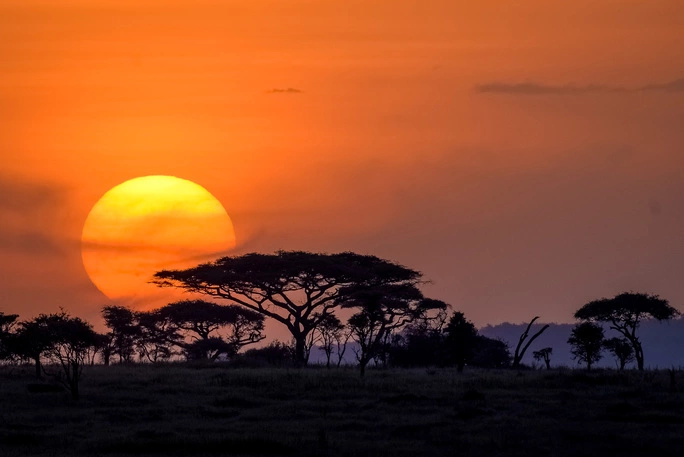
By road, two options are provided for the tourists. They can choose to have a drive-in offered by the park’s management or drive themselves with their own car- personal or hired. The drive-in begins from Arusha at any of the Serengeti entrance gates. Drives take around 8 hours to the respective camp locations. The tourists who choose the self-drive option are required to pay a stipulated fee at the entrance to allow them to use their car.
By air, you can access The Serengeti via Kilimanjaro International Airport (KIA) which is 320KM from the park’s entrance gate. The airport can then arrange for a chartered flight to Serengeti. These flights take roughly 1 to 4 hours. Serengeti has seven airstrips which make air travel more efficient. Private airstrips are also there for less travel hustle and faster traveling.
What Is The Serengeti Known For?
Serengeti is mostly popular for The Great wildebeest migration, but apart from the migration, it is also known for its wildlife, exotic birdlife, and insects.
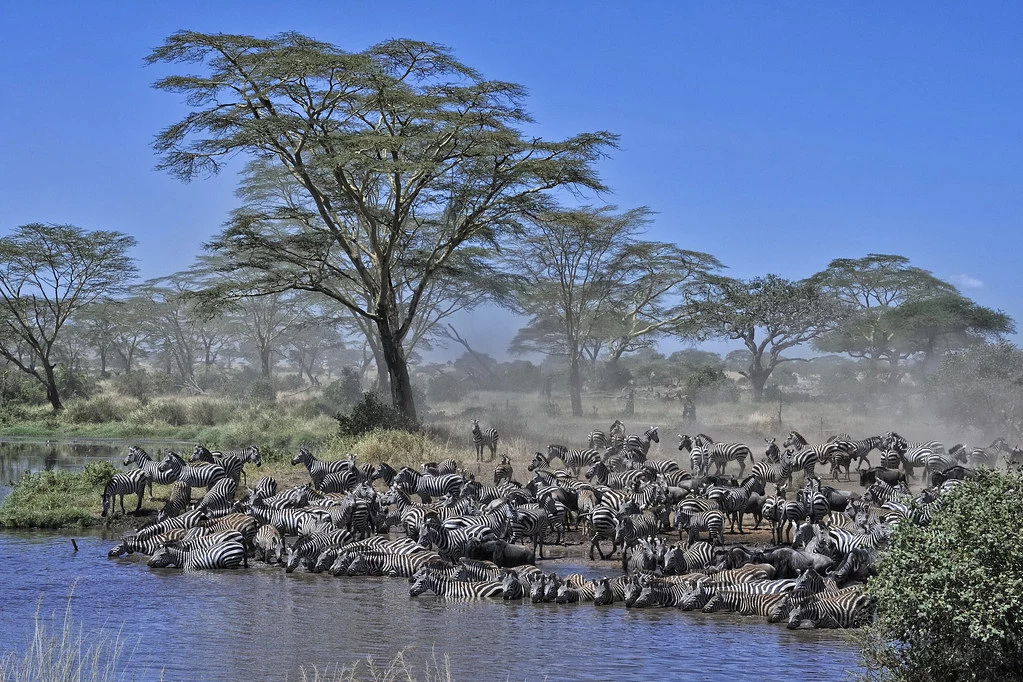 Zebra, Serengeti.” class=”wp-image-2991″/>
Zebra, Serengeti.” class=”wp-image-2991″/>It is also the largest savanna in East Africa, with a large area of plain land with grass and scarce trees.
The wildlife consists of around 1.2 million wildebeests, 4000 lions, 1000 leopards, 550 cheetahs, 150000 gazelles, 60000 zebras, almost 1400 elephants, and 7500 hyenas, hippopotamuses, giraffes, cheetahs, baboons, and crocodiles in the Mara River. These animals move in large herds from one side of the park to the other depending on the availability of green pasture and water. The big five: Lion, Leopard, the black rhinoceros, African Bush Elephant, African buffalo. The term big five was coined to refer to the animals that are hard to hunt on foot.
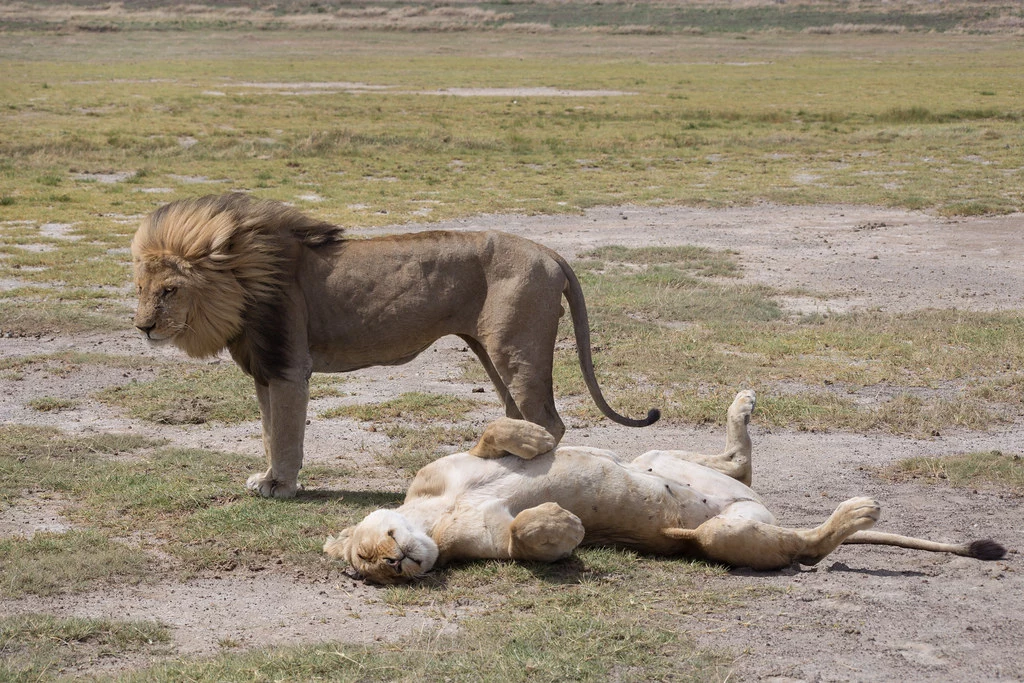 Lions, The Serengeti.” class=”wp-image-2992″/>
Lions, The Serengeti.” class=”wp-image-2992″/>The birdlife, on the other hand, consists of more than 500 bird species. Serengeti is home to 5 bird species found nowhere else in the world. These birds include the grey-throated spurfowl, red-throated tit, Rufous-tailed Weaver, Schalow’s turaco, and the grey-crested helmet shrike.
There are several insect categories like the dung beetles, grasshoppers, termites, butterflies, moths, and ants. These help in completing the food chain and break down organic wastes into smaller components, which can later be used as nutrients to grow grass and trees in the savanna.
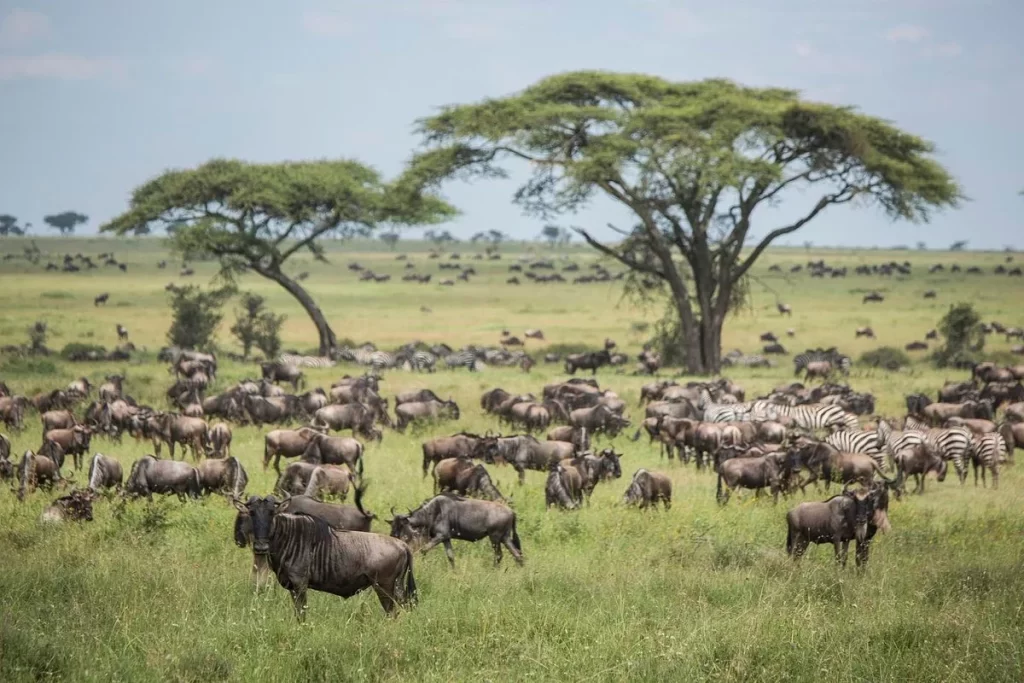
The Great Migration in the Serengeti is the most popular tourist attraction activity. It takes place during a specific period of the year. When the wildebeests reach the Mara River, it takes them around 30 minutes to get to the other side of the river. Before getting to the crossing area, the animals mate and stick to the calving grounds. The calving takes place in Ngorongoro Conservative Area. The female gnus give birth to around 500,000 calves in a period of 2 to 3 weeks. The wildebeests hang around the Ngorongoro area because the soil and grass in the area have a lot of potassium, calcium, and phosphorus from the volcanic eruptions from the Ngorongoro crater from around 2 to 2.45 million years ago. The nutrients in the grass help in the growth of their calves.
The wildebeests follow rain patterns in East Africa throughout the year. They migrate in search of green pasture and water. From December to April, the Gnu mate, and the female ones give birth. As the calves grow, they begin to move to the north side of the park. Between April and May, the long rains are set to begin and most of the grass is gone so the calves are attacked by predators like lions, hyenas, wild dogs, and leopards since there are no hiding spots.

In June and July, they move to the western corridor on the West side of the Serengeti. This stretches from the center out towards Lake Victoria. By this time of the year, the Grumeti River is low which leaves them with the risk of being attacked by the crocodiles on the banks of the river. By the end of July, they reach the Kenyan border. Between August and September, they cross the Mara River in Kenya. This crossing comprises herds. These herds contain wildebeests, zebras, and other plain animals. This animal march is a trek of around 40 km. Some of the animals are struck during the crossing by crocodiles and other predators on the other side of the river, making the crossing chaotic. In late October, the gnu moves eastwards while they prepare to move south again since the pasture here is low as the short rains are set to begin in late October and early November. They move from the Kenyan border towards the south side of Tanzania. By the time December comes, they are back in Tanzania ready to begin the cycle and start calving again.
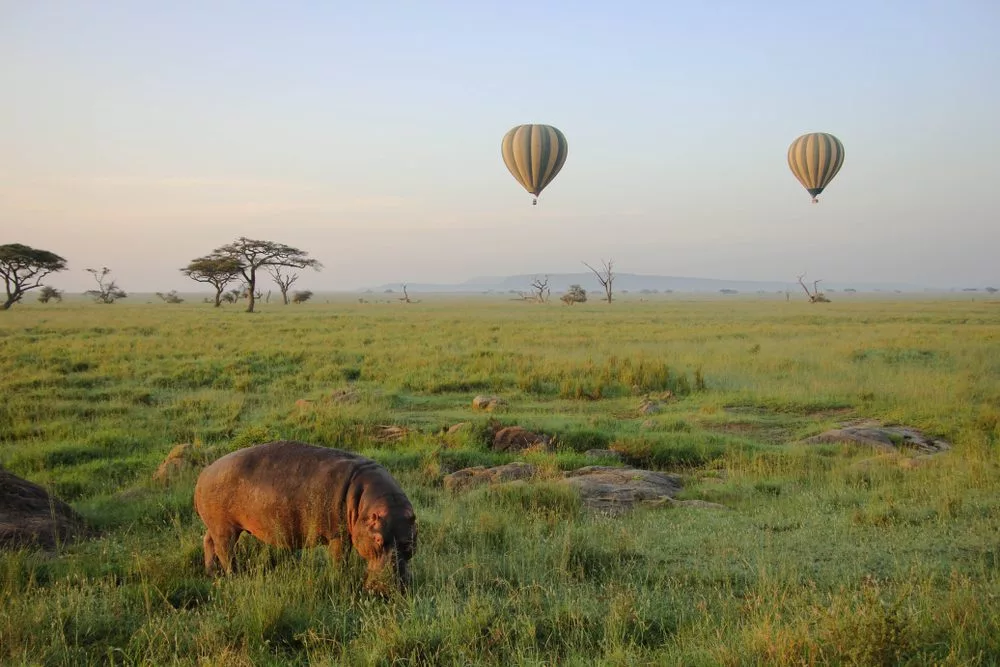
Serengeti is also known for its hot air balloon safaris. These flights begin at 6 in the morning from 4 launch sites, and they last for 50 to70 minutes. The launch sites are Seronera which runs throughout the year, Ndutu which runs from December to March, Western corridor which runs from June to October and the last one in North Serengeti from July to October.
The flights cost up to $599 per person. This fee includes the transfer fee from the camps to the balloon launch site, the balloon flight, and breakfast which takes place after landing. The flight takes up to 16 passengers and 6 crew members and a pilot.
